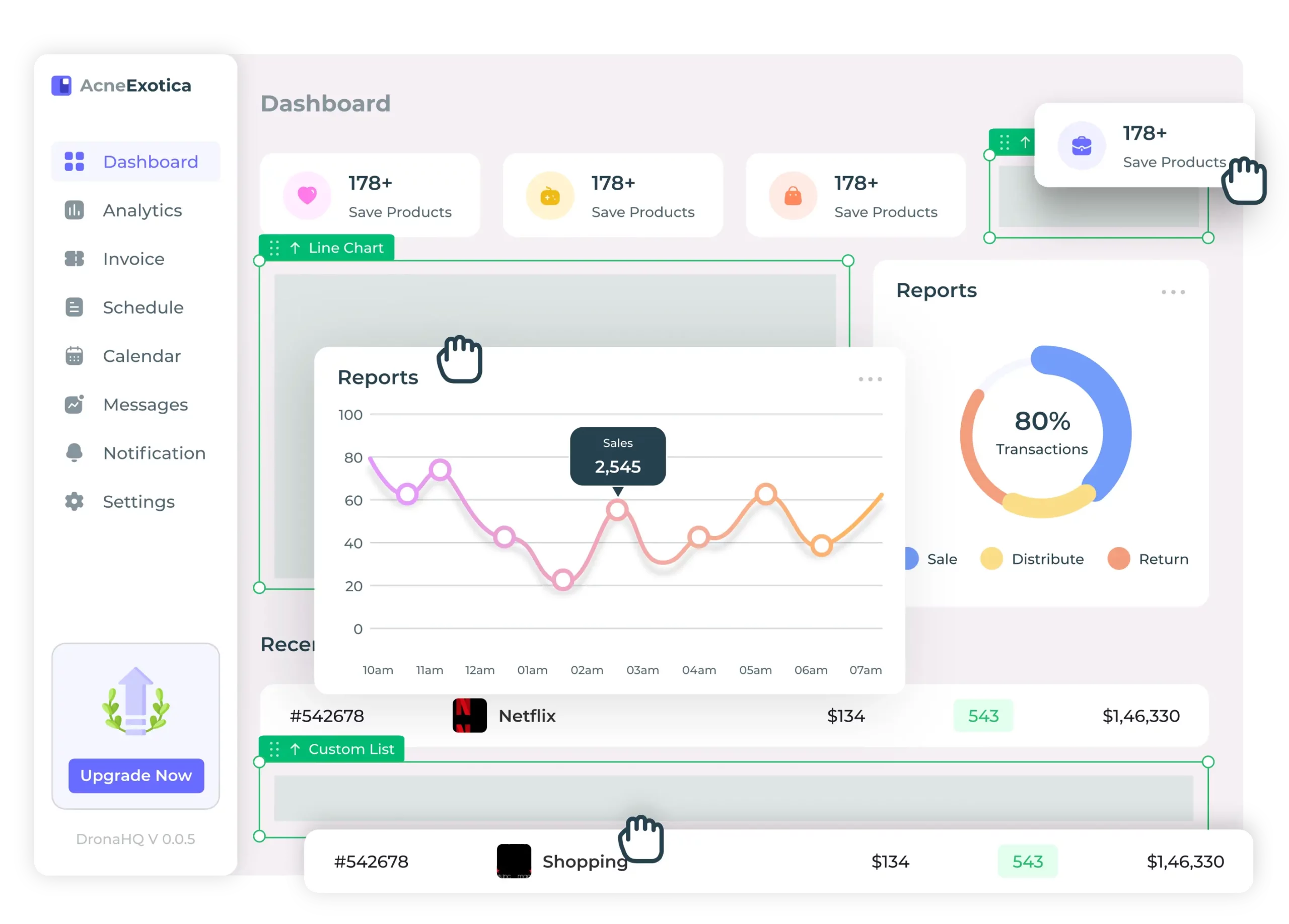Creating a simple and effective system interface is one of the most critical aspects of modern software and IT solution design. A well-structured interface doesn’t just look good—it enables users to interact intuitively, minimizes errors, and boosts productivity. At Singleclic, we specialize in designing interfaces that balance simplicity, functionality, and performance across diverse industries.
What Is System Interface Design?
System interface design refers to the process of structuring the way users interact with software systems. It covers everything from visual layout and navigation to interaction logic and user feedback mechanisms.
An effective interface ensures that even complex systems remain accessible to users of all technical levels. The design process involves studying user behavior, defining key tasks, and creating workflows that reduce friction while maintaining a professional aesthetic.
Why Simplicity Matters in Interface Design
Simplicity is not about removing features—it’s about refining user journeys to make actions effortless. A clean interface helps users complete tasks faster, reduces cognitive load, and enhances overall satisfaction.
Benefits of a Simple Interface
- Faster learning curve for new users
- Reduced errors and confusion
- Better accessibility for all device types
- Increased productivity and satisfaction
At Singleclic, our UX/UI experts use modern frameworks and design systems to deliver efficient interfaces tailored to each client’s operational goals.
The 7 Principles of Effective Interface Design
Understanding the 7 core principles of user interface design is key to building an engaging and user-friendly system:
- Clarity – Ensure every element has a clear purpose.
- Consistency – Maintain uniform design patterns across screens.
- Feedback – Provide instant visual or auditory responses to user actions.
- Efficiency – Streamline user flows to reduce unnecessary steps.
- Aesthetics – Balance colors, typography, and spacing for readability.
- Error Prevention – Design forms and inputs to minimize mistakes.
- Accessibility – Make sure every user, including those with disabilities, can easily use the system.
These principles guide how we craft interfaces that improve both usability and engagement.
How to Design an Effective System Human Interface
Designing an effective system human interface requires a deep understanding of both user psychology and business logic. The process involves:
- User Research: Gathering data about real users’ needs and pain points.
- Information Architecture: Organizing content logically to ensure intuitive navigation.
- Wireframing & Prototyping: Visualizing workflows before development.
- Usability Testing: Continuously refining based on user feedback.
- Performance Optimization: Ensuring speed, responsiveness, and reliability.
By integrating these stages, Singleclic delivers interfaces that not only meet visual standards but also enhance user satisfaction and business performance.
The Connection Between UX and Interface Design
Every successful interface is built on a strong user experience (UX) foundation. While UX focuses on the user journey, interface design focuses on the touchpoints along that journey.
For a deeper look at how UX shapes modern IT solutions, explore our full article here:
👉 User Experience (UX) in Tech Solutions
Why Choose Singleclic for Interface Design?
Since 2013, Singleclic has been a leader in IT and digital transformation across the Arab world. Our team has developed hundreds of user-centric systems that streamline operations and enhance digital performance.
Our Core Services Include:
- Software Development: Custom applications built with modern frameworks.
- Network Solutions: Design, installation, and maintenance of IT infrastructure.
- Cybersecurity: Advanced protection against online threats.
- Hosting & Cloud Solutions: Reliable web and server hosting.
- 24/7 Technical Support: Round-the-clock assistance for business continuity.
📞 Contact us:
Egypt: +2 010 259 99225
UAE: +971 42 475421
KSA: +966 58 1106563
🌐 https://singleclic.com/
People Also Ask
How to design an effective system human interface?
Start by understanding user needs, defining workflows, and applying UX principles such as clarity, consistency, and accessibility. Testing and iteration are key.
What is system interface design?
It’s the process of creating the visual and interactive components that allow users to interact with a system efficiently and intuitively.
How do you design an interface?
Use a structured approach: research → prototype → test → refine. Each step ensures the final design is both functional and user-friendly.
What are the 7 principles of user interface design?
Clarity, consistency, feedback, efficiency, aesthetics, error prevention, and accessibility.









